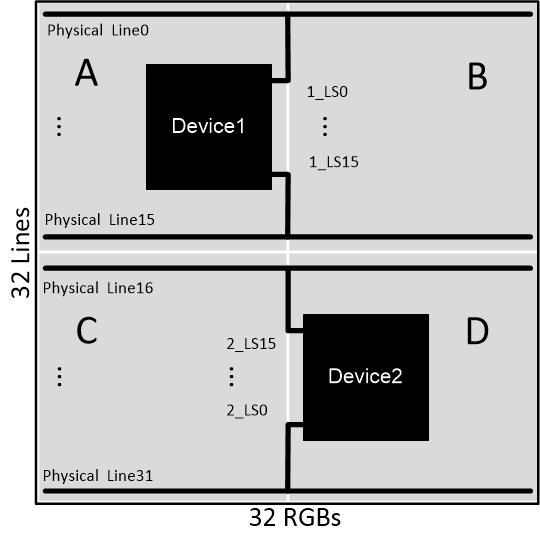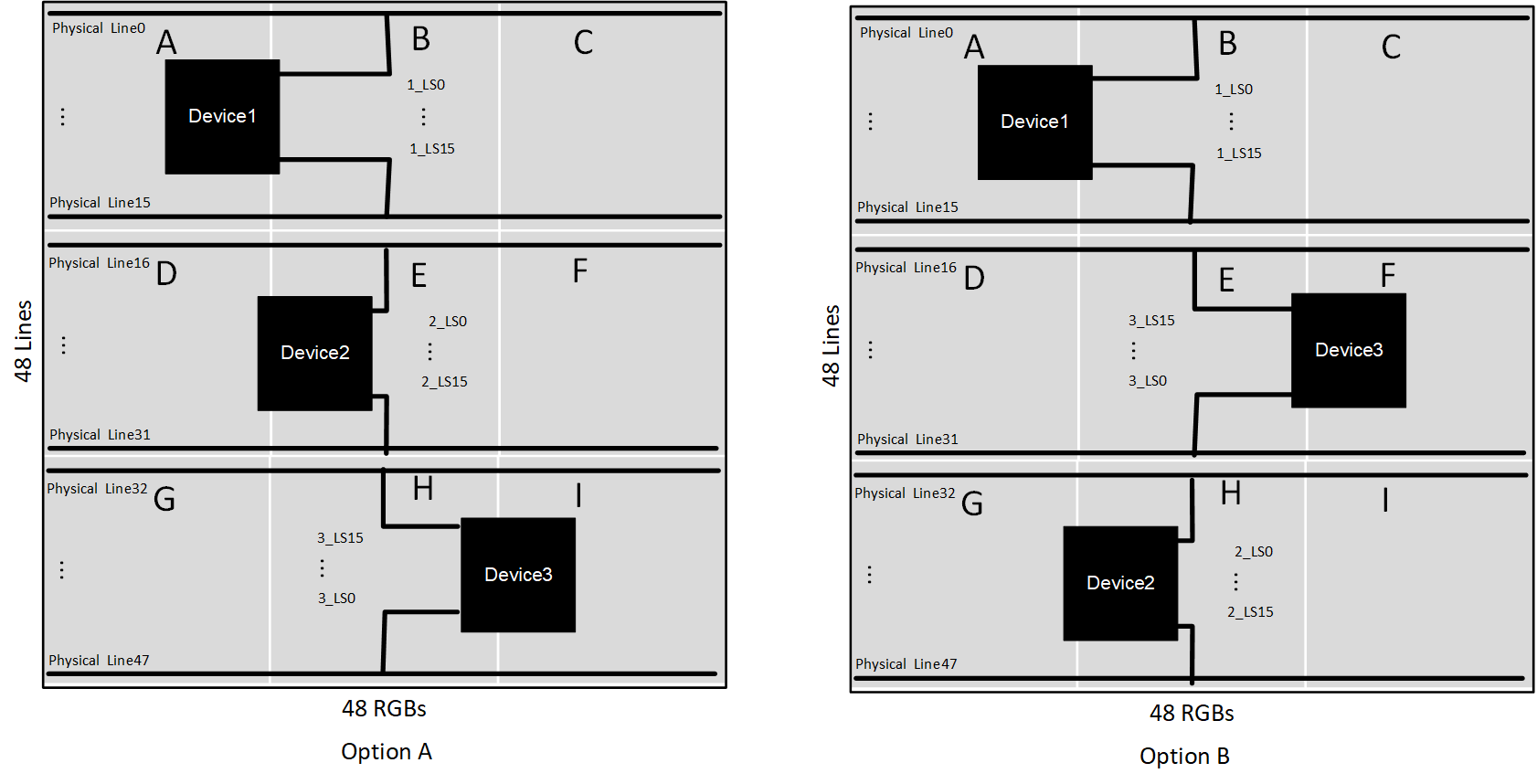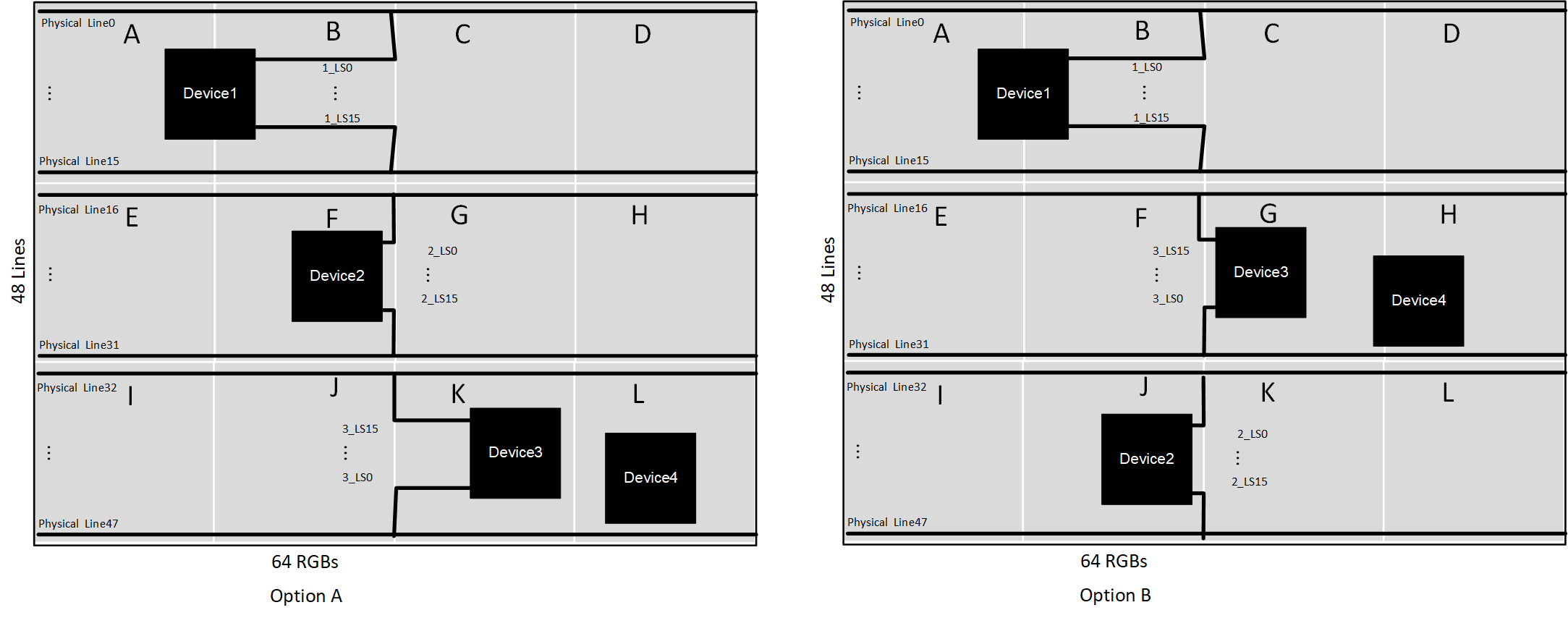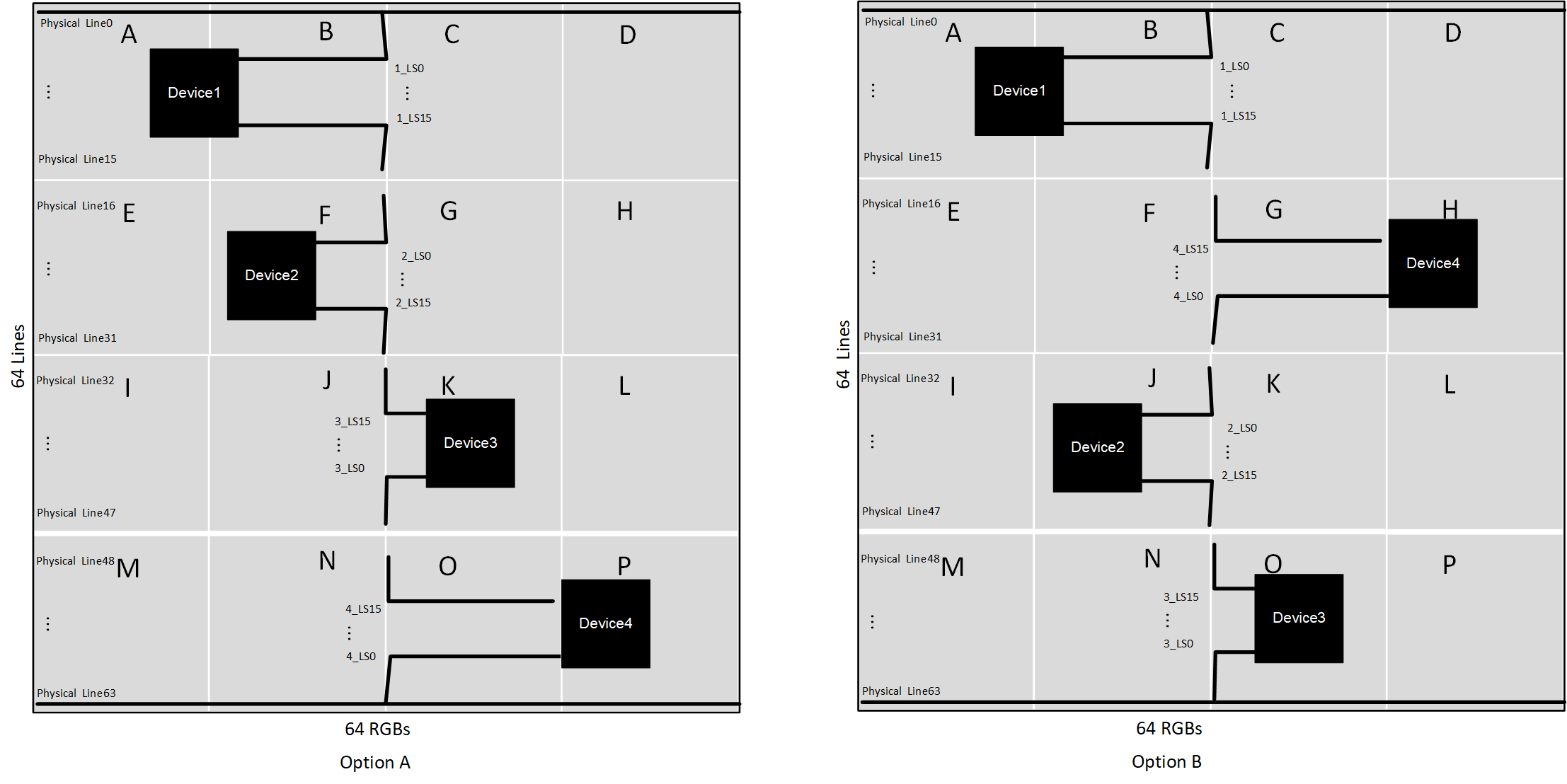JAJSNK8D November 2021 – July 2022 TLC6984
PRODUCTION DATA
- 1 特長
- 2 アプリケーション
- 3 概要
- 4 Revision History
- 5 概要 (続き)
- 6 Pin Configuration and Functions
- 7 Specifications
-
8 Detailed Description
- 8.1 Overview
- 8.2 Functional Block Diagram
- 8.3
Feature Description
- 8.3.1 Independent and Stackable Mode
- 8.3.2 Current Setting
- 8.3.3 Frequency Multiplier
- 8.3.4 Line Transitioning Sequence
- 8.3.5 Protections and Diagnostics
- 8.4 Device Functional Modes
- 8.5 Continuous Clock Series Interface
- 8.6 PWM Grayscale Control
- 8.7 Register Maps
- 9 Application and Implementation
- 10Power Supply Recommendations
- 11Layout
- 12Device and Documentation Support
- 13Mechanical, Packaging, and Orderable Information
パッケージ・オプション
メカニカル・データ(パッケージ|ピン)
サーマルパッド・メカニカル・データ
発注情報
8.3.1.2 Stackable Mode
Table 8-1 shows operating the TLC6984 in stackable mode.
| Mode | Matrix Size | Register Value | Scan Sequence |
|---|---|---|---|
| Mode1 | 16 × 32 | 000b | D1, D2 independent |
| Mode2 | 32 × 32 | 001b | D1->D2 |
| Mode3 | 48 × 48 | 010b | D1->D2->D3 |
| Mode4 | 48 × 48 | 011b | D1->D3->D2 |
| Mode5 | 48 × 64 | 100b | D1->D2->D3 |
| Mode6 | 48 × 64 | 101b | D1->D3->D2 |
| Mode7 | 64 × 64 | 110b | D1->D2->D3->D4 |
| Mode8 | 64 × 64 | 111b | D1->D4->D2->D3 |
Figure 8-2 shows that device 2 must be rotated 180o relative to device 1. This action allows the position of line switches to be near the center column of the LED matrix for better routing. For device 1, the lines are connected sequentially (line switch 0 connected to scan line 1). However on device 2, it is connected in reverse order, with the 16th scan line is connected to line switch 15 and the 32th scan line is connected to line switch 0.
Figure 8-2 shows the connection between two TLC6984 devices in stackable mode driving a 32 × 32 RGB LED pixels. The MOD_SIZE must be configured to 001b. Device1 supplies 16 line switches for the first 16 scan line, and device 2 supplies 16 line switches for scan line 17-32. The data for matrix sections A and C are stored in device 1, while matrix sections B and D data are stored in device 2.
To make sure the scanning sequence is still from 1st line to 32nd line, the scan line switching order of the second device must be reversed, This configuration can be completed by the SCAN_REV (see FC4 for more details).
 Figure 8-2 Mode2 Diagram
Figure 8-2 Mode2 Diagram Figure 8-3 Mode3 and Mode4 Diagram
Figure 8-3 Mode3 and Mode4 Diagram Figure 8-4 Mode5 and Mode6 Diagram
Figure 8-4 Mode5 and Mode6 Diagram Figure 8-5 Mode7 and Mode8 Diagram
Figure 8-5 Mode7 and Mode8 DiagramWhen two TLC6984 devices are used in stackable mode, if there are unused line switches, these unused line switches must be the last line switches of the first or the second device. For example, if there are only 30 scanning lines, and if,
SCAN_REV = '0'b, the unused line switches can be either of below,
- 1_LS14, 1_LS15
- 2_LS14, 2_LS15
SCAN_REV = '1'b, the unused line switches can be either of below,
- 1_LS14, 1_LS15
- 2_LS1, 2_LS0
If the unused line switches are 1_LS14, 1_LS15, the FC6-FC13 registers must be configured. If the unused line switches are 2_LS14, 2_LS15 when SCAN_REV = '0' or 2_LS1, 2_LS0 when SCAN_REV = '1', there is no need to configure FC6-FC13 registers.